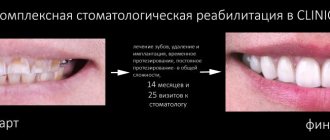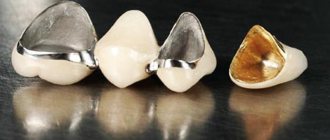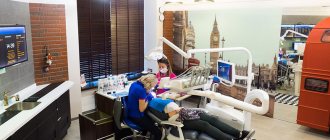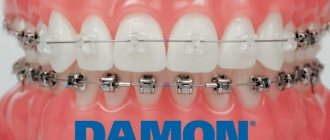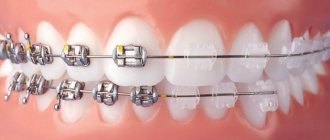If you are reading this article, it means that you are interested in improving your bite and are considering braces.
This shows that you have the determination to achieve a healthy, charming smile.
Here we have collected the questions that people most often write to us in messages.
I hope this changes your life for the better, just like it has changed the lives of thousands of other people.
Can adults get braces to correct their bite?
Anyone can correct a malocclusion, regardless of age. But in an adult, this process takes longer than in children, because skeletal growth has already stopped and hard bones are more difficult to form.
In addition, some oral health conditions may delay the installation of braces. For example, caries, periodontal disease, endocrine diseases.
Sometimes the effect of treatment is influenced by the presence of crowns and bridges. The treatment period starts from 1.5 years.
How much do braces cost?
Indeed, dental correction cannot be called very affordable. However, we are doing everything to provide this opportunity to those who need it. With us you can get comfortable installments and choose a system from different price segments. Sometimes it is advisable to choose more expensive braces for one jaw and install a cheaper design on the other.
In the price list you will find a complete list of designs. But it’s better to talk about this with your doctor - he will tell you what is right for you, how long you will need to wear braces and how much you will have to spend on it. For example, the most technologically advanced Damon self-ligating braces, which reduce treatment time by 20–30%, cost a little more.
It is worth understanding that the total cost of treatment includes regular visits to the doctor, professional cleaning, replacement of locks and other issues.
Remember - any doubt can be resolved in consultation with a doctor!
Does teeth straightening hurt?
The installation of braces itself is painless, but requires patience because it takes about an hour.
For 7-10 days, teeth may hurt when biting. The body must get used to foreign objects. In general, you live your old life, you just notice pleasant changes in yourself.
Control visits are needed to correct the process and form the correct position of the teeth. Usually after changing the arch the pain goes away within 3-7 days. It all depends on individual sensitivity.
For some, wearing braces is only unpleasant, for others, on the contrary, it is painful, and some do not feel anything.
After getting braces, will I have to go on a strict diet?
Undoubtedly, there will be changes in diet, but they are absolutely not worth the fears associated with the myth that braces deprive you of gastronomic joys. You will just need to be more careful and exclude only some of the products (nuts, puffed rice, popcorn, caramel, nougat, seeds, chewing gum, etc.).
First of all, this is necessary in order not to clog the spaces between the grooves of the braces, where bacteria can accumulate and caries can develop. You should also avoid drinks with dyes, hot and cold drinks (temperature changes can cause the braces to come off).
Think for yourself, after all, braces are even a kind of motivation to start a healthy lifestyle, because it is mainly harmful foods that are excluded.
Eating while wearing braces
Do braces make it difficult to eat?
Once installed, you will need to learn how to eat in them. This period takes on average 3-7 days.
At this time, give preference to soft and liquid foods. Cut fruits and vegetables into small pieces. Avoid fibrous and sticky foods.
Over time, you will be able to eat almost everything except Coca-Cola (can dissolve glue), hard foods (nuts, crackers, chocolate) and sticky sweets (chocolate, cookies or caramel bars). You should also not chew gum.
Indications and contraindications for installation
Problems that alignment with braces can help solve:
- crooked teeth due to improper growth
- displacement of the dentition as a result of the removal of dental units
- jaw development disorder
When there is crowding and gaps between teeth, braces are the optimal solution. In the latter case, it will not be possible to manage with orthodontic treatment alone; complex procedures with the participation of a surgeon will be required.
How often should inspections be carried out?
Every 1-2 months, it all depends on the defect and the individual structure of the patient’s teeth. During the visit, the orthodontist checks the success of the treatment and sets a vector for the arch, which determines the movement of teeth in the right direction.
Missing follow-up visits may negate the effect of previous treatment. You are also required to visit a hygienist every six months.
Braces, whether external or internal, need to be worn for an average of 1.5 years. But determining more precise timing depends on the initial situation and age of the patient. Sometimes it takes 2 years to eliminate a defect.
Which braces are more profitable to install?
Self-ligating and ligature braces correct the bite and correct complex dental anomalies. Non-ligating systems are more expensive, but the installation of self-ligating structures reduces the number of visits to the clinic. At a lower price for edgewise braces, the patient visits the orthodontist an average of 24 times during treatment, 2.5 – 3 years. When installing self-ligating systems, approximately 12 visits to the doctor are required. The course lasts from 1 to 2.5 years.
Clinic management is often not ready to purchase expensive systems and pay for additional training for orthodontists. Doctor A.V. Tikhonov economically substantiated the advantages of installing ligature-free braces. The orthodontist compared the rate of arch replacement during activation of self-ligating structures and traditional models with ligatures. On average, removing and installing the arch takes 8 minutes. 14 sec. on classic systems and 1 min. 21 sec. – on self-ligating ones. Usually the arches are changed on the upper and lower jaws - the duration of the manipulation is doubled.
treatment on Damon Q2
According to the researcher, taking into account the reduction in treatment time and the number of visits to the doctor, ligature-free braces are more economical for the clinic and the patient. The ergonomics of working with the ecosystem of Damon braces and additional elements reduces the appointment time and the total financial costs of the person visiting the clinic.
What to do if the bracket comes off?
In itself, this happens quite rarely, only in cases of severe crowding of teeth, since the arch puts a lot of pressure on the dentition and the lock falls off. Another option is if the patient is a nut or other solid food lover.
If you find a broken bracket, contact your orthodontist immediately. Otherwise, the teeth will begin to gradually move to their original position. Also remove elastic bands if you wear them.
The doctor sees patients with unstuck braces out of turn. It takes about 5 minutes to glue a new lock.
It also happens that the archwire flies out of the bracket grooves. You can try to get it back yourself. However, this should be done extremely carefully, without damaging the adjacent locks.
When can you do without braces?
Is it possible to avoid braces altogether and use transparent removable aligners? Can! But you should understand that mouthguards can correct only slight deviations from the norm. They will not have any effect on serious defects.
Often, mouthguards are prescribed to children to guide their bite or straighten slightly uneven teeth. This is also true for teenagers, but adults are almost never prescribed treatment with mouthguards, as it does not produce results.
An orthodontist prescribes braces only after 13–14 years of age. Trainers and plates may also be helpful at younger ages. These are specific removable structures that the child wears for several hours a day. They have a positive effect on the bite and help the teeth take the correct position.
Often adults, understanding all the responsibility for future risks, still do not turn to the orthodontist. And this choice also takes place. However, we recommend at least getting a consultation - if you are not ready to wear braces, then at least you will know what difficulties may arise in the future.
How to brush your teeth with braces?
This is where a traditional toothbrush and toothpaste don't serve their purpose. Therefore, you will need to buy a special orthodontic brush, brushes and floss from the pharmacy. You can also use an oral irrigator if you wish.
This way you can effectively clean your teeth and the area around the locks. Teeth should be thoroughly brushed after each meal, because food debris is deposited on braces, which contributes to the development of caries and does not look aesthetically pleasing. We have repeatedly encountered patients whose teeth are more well-groomed than those of a person without braces.
Can a doctor change treatment technology or strategy in the middle of treatment?
Maybe. if he sees that he cannot cope with the orthodontic technique he is currently using. It is optimal that all possible options are discussed between the orthodontist and the patient before treatment begins, as well as the possibility of tooth extraction. If your orthodontist says that he will begin treatment without extraction, but in the process a tactic with extraction may be chosen, then this is normal. But if the doctor announces treatment without extraction, and already during the course of treatment it becomes necessary to remove two teeth, then this is an unpleasant situation, extremely rare for a professional. In our clinical practice, this happened only 2-3 times among 2000 patients.
Sometimes there are controversial situations. For example, if the patient insisted on using the lingual technique despite other recommendations of the orthodontist, but after 1.5-2 years the desired result was not achieved, then it is better to install external braces and complete the treatment with them. Our clinic’s position is to find a compromise – if it is necessary to change technology, the patient does not suffer, including financially.
Are braces the last stage of orthodontic treatment?
After removing braces, you need to consolidate the effect of straightening your teeth. For this purpose, retainers are made that will protect teeth from returning to their original place.
There are two types of retainers:
- Removable – transparent, plastic mouth guards. Used only at night or during a certain period.
- Non-removable - made of metal. They are installed on the back surface of the teeth using special composite materials.
The decision on the best method is made by the orthodontist. The aligners must be worn at all times during the first month, removed only for eating and brushing your teeth. On average they are worn for 2 years.
While wearing retention devices, you must visit a doctor every 3-6 months.
Orthodontist appointment
A visit to the doctor to install braces includes the following steps:
- external examination of the patient’s oral cavity, identifying orthodontic problems;
- determination of a suitable structure for correction, its material and size;
- installation of a bracket system;
- periodic visits to a doctor called an orthodontist to tighten the main arch.
The specialist must determine the cause of the curvature of the dentition. The most common reasons are:
- bad heredity. Curvature of teeth can be transmitted from parents to children, and this pathology is accompanied by other dental abnormalities (diastema, trema, etc.). In such situations, braces are installed and the identified diseases are treated;
- disorders of intrauterine development. In this case, the child will experience defects as soon as the baby teeth erupt. This category of patients needs the painstaking work of a special doctor called an orthodontist;
- anomalies that develop after the replacement of milk teeth with permanent ones. It is better to consult a doctor in the early stages of deformation processes, this increases the effectiveness of bracket correction.
On average, a doctor installs braces on 15 patients per day. One appointment takes no more than 30-40 minutes and there is no need for additional treatment.
Correcting a bite with braces takes place in 2 stages:
At the first stage, the doctor selects the correct design and carefully installs it for the patient.
At the next stage, retainers or mouth guards are installed, which help consolidate the result. How long to wear them is determined by a doctor called an orthodontist. Such structures have to be used throughout life; this helps to maintain the effect obtained from treatment with braces.
Thus, the treatment of problems with malocclusion is not carried out by a regular dentist, but by a doctor called an orthodontist. His qualifications directly determine how attractive a person’s smile will become.
Can you continue to live with crooked teeth?
Crooked teeth are more vulnerable to tooth decay and periodontal disease. If teeth grow incorrectly, their surfaces become excessively worn down when eating, which worsens the malocclusion. Therefore, sometimes it leads to serious diseases of the temporomandibular joints.
In addition, if you suffer from frequent headaches, chondrosis, or have tinnitus, it is better to check your bite.
Reasons for visiting an orthodontist
You should consult a doctor called an orthodontist (he is the one who installs braces) in the following cases: violations of the aesthetics of the dentition, complications that arose after the prosthetic procedure or damage to the soft tissues of the oral cavity, malocclusion, frequent thumb sucking, speech disorders, twisted teeth, incorrect position of the upper or lower jaw.
A timely visit to a doctor will help in many cases to avoid prosthetics and eliminate the reasons that prevent this procedure.
Braces hurt the oral cavity, what should I do?
After installing braces, each patient receives wax for locks from the orthodontist. At the very beginning, it is worth applying it to the entire system, because the mucous membrane in the oral cavity is not yet accustomed to contact with foreign objects.
Abrasions and wounds heal very quickly. Their healing can be accelerated by using agents that promote the healing of wounds in the oral cavity.
Second month of treatment: correction of gross anomalies
The first changes become noticeable in the photo by the end of the second month. The orthodontic arch, after installation, repeated the shape of the abnormal bite, over time began to return to the originally specified state, corresponding to the correct bite. At the same time, under the force of her traction, the teeth also began to move in the right direction.
The first positive results are so impressive that some patients are ready to remove their braces at this stage. Of course, this is impossible. Orthodontic treatment initiates the natural biomechanical process of bone removal and growth, interrupting which will force the teeth to return to their original position.
Photos before and after
It is impossible to create a truly Hollywood smile without straightening your teeth and correcting your bite. Therefore, if a patient has orthodontic problems, braces are included in the mandatory treatment plan. Incorrect bite and crooked teeth are one of the main contraindications for the installation of aesthetic restorations. If you ignore orthodontic treatment and proceed straight to veneering, the veneers simply will not stick to the teeth. This fact is confirmed by personal example by many celebrities who, for the sake of a perfect smile, put braces on their teeth.
Tom Cruise decided to fix his teeth with braces only after 40 years.
After the breakup of the Spice Girls, Melanie Jane Chisholm had to seriously work on her image, and, above all, straighten her teeth.
Cristiano Ronaldo was not always handsome, as his impeccable smile might lead you to believe. According to rumors, he spent more than a million euros on teeth straightening and other procedures.
What toothbrushes should you buy to care for braces?
For complete care, one v-shaped brush is not enough. In order to be sure that the teeth under the braces system are perfectly cleaned, you need to have several more types of brushes in your arsenal.
Interdental.
This type is used to clean spaces between brackets as well as areas under metal arches. Interdental brushes are available in different sizes, so they can also be used for deep cleaning of interdental spaces.
Mono-beam.
The mono-beam brush has a curved shape, thanks to which it can reach even the most difficult to reach places. This type of brush is intended for caring for braces, not teeth. Even the smallest clasps and ligatures will be perfectly clean with daily use of mono-tuft brushes.
It is worth knowing that any type of brush will wear out several times faster. This is due to the fact that when cleaning a metal system, the bristles can be pulled out. Therefore, you will have to change all care accessories much more often than recommended on the package.
